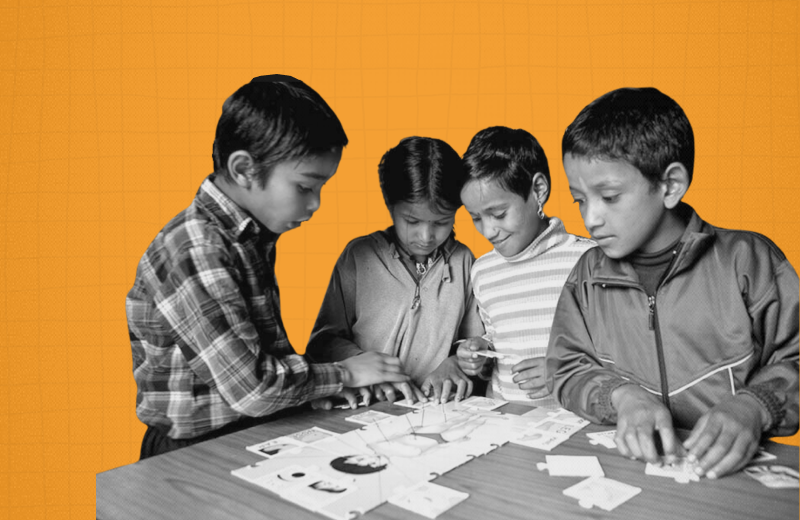
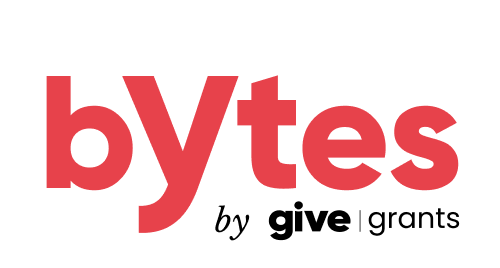
“Bytes: Practical Research for CSR” is a series by Give Grants designed to decode and demystify the extensive social impact research and data available in the form of clear and actionable insights for CSR practitioners in India.”
Despite a primary school enrolment rate of 89% for the past decade(ref), foundational learning in India faces major challenges. In 2023, 2.9% of GDP and 23% of CSR spend went to education, yet 75% of learners struggle with basic skills. ASER 2022 shows only 20% of Grade 3 students and a mere 69% of Grade 8 students can read a Grade 2 text. Just 26% of Grade 3 students are able to do subtraction, while only 45% of Grade 8 students can perform simple division. This learning crisis is not limited to having implications on primary school outcomes. Instead, it impacts long-term academic outcomes, career prospects, and overall human development.(ref)
What is Foundational Literacy and Numeracy (FLN)?
- Literacy: The ability to read simple texts with comprehension, recognizing letters, forming words, and understanding short sentences.
- Numeracy: The ability to recognize numbers, understand their value, and perform basic calculations such as addition and subtraction.


The 3-layered focus of FLN delivery
The delivery of FLN operates at three levels:
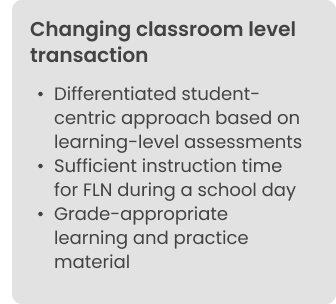
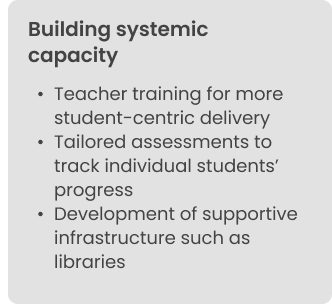
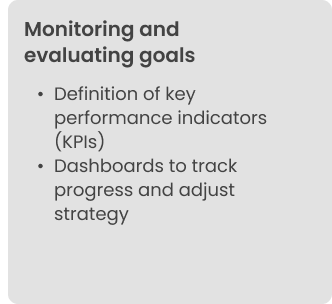
National Education Policy 2020 and Nipun Bharat Mission
In recent years, India has placed significant emphasis on enhancing accessibility to education through a series of robust legislative measures, policy reforms, and targeted interventions. Initiatives such as the Right to Education (RTE) Act, Samagra Shiksha Scheme, and the National Education Policy (NEP) 2020 reflect this commitment, aiming to boost enrollment, reduce disparities, and promote inclusive, high-quality education. Supported by digital initiatives like SWAYAM, comprehensive scholarship schemes, and infrastructural improvements, these initiatives have led to improvements in Gross Enrolment Rates (GER) and reduced dropout rates across grades.(ref)
As per NEP guidelines, the government launched NIPUN Bharat (National Initiative for Proficiency in Reading with Understanding and Numeracy), which aims to ensure that every child achieves foundational literacy and numeracy by FY27. The implementation of NIPUN Bharat is a collaborative effort involving states and union territories, which play a critical role in its execution.(ref)
This initiative follows a multi-pronged approach:
- Development of high-quality resources for foundational learning.
- Continuous teacher training to enhance instructional methods.
- Robust monitoring at district and state levels to track progress.
Since 2020, funding for education under the NEP has steadily increased, though it remains below 3% of GDP.(ref) In FY23, INR 1.12 lakh crore (~2.9% of GDP) was allocated for education, with over 50% directed to the Samagra Shiksha Abhiyan, which aims to deliver quality education from pre-primary to senior secondary levels. Nipun Bharat Mission, the largest initiative under this scheme, received ~INR 37.5k crore (33% of education budget) to boost foundational literacy and numeracy.(ref) In spite of the fund inflow, the success of this mission relies on collaboration between the central government, states, union territories, and non-governmental stakeholders.
Collaborative efforts and early pioneers in FLN implementation
While the FLN program is well-funded, its success relies on contributions from diverse stakeholders like academia, NGOs, social enterprises, and CSR. These groups act as enablers, funders, and implementers, offering technical expertise and innovation in areas such as teacher training, community engagement, curriculum design, and assessments. Many organizations, such as Rishi Valley and Seeta School were early movers in FLN, with some piloting successful models that influenced the inclusion of FLN in NEP 2020.
Here are some pioneers that have played a pivotal role in driving FLN outcomes across India.
- Pratham’s Teaching at the Right Level (TaRL): Pratham’s TaRL groups children by learning levels, not age, and has impacted over 60 million children across India and Africa. In Haryana, students reading at Grade 2 level rose from 34% to 47%, and in Uttar Pradesh, from 14% to 24%.(ref)
- Room to Read: Room to Read has aided FLN delivery through libraries in primary schools, enhancing reading comprehension and fluency. Through government partnerships, these libraries are integrated into public education systems for widespread access and sustainability.
- Central Square Foundation: CSF uses technology and data to enhance learning. It helped design the NIPUN Bharat Mission and created the SAFAL assessment system. CSF works with 11 states to implement FLN programs and ease systemic constraints.
- Educational Initiatives: They specialize in educational research and personalized adaptive learning. Their EdTech solutions, like Mindspark, create customized learning paths for students. A 2015 J-PAL study reported a 200% higher improvement in math scores and 240% higher improvement in language skills against a control group using this model.(ref)
Funding FLN through CSR
Investing in foundational literacy and numeracy (FLN) is crucial for shaping the future workforce. While the government is committed to FLN through policies and budget allocations, there is a need for innovation in pedagogy, school and community-level programs, and teacher capacity building. CSR can play a transformative role by funding pilots and innovative solutions that align with the government’s roadmap. This partnership can ensure a generation of students is equipped with the skills they need to succeed.
[Infographic] Foundational Literacy & Numeracy: A govt-aligned CSR opportunity



